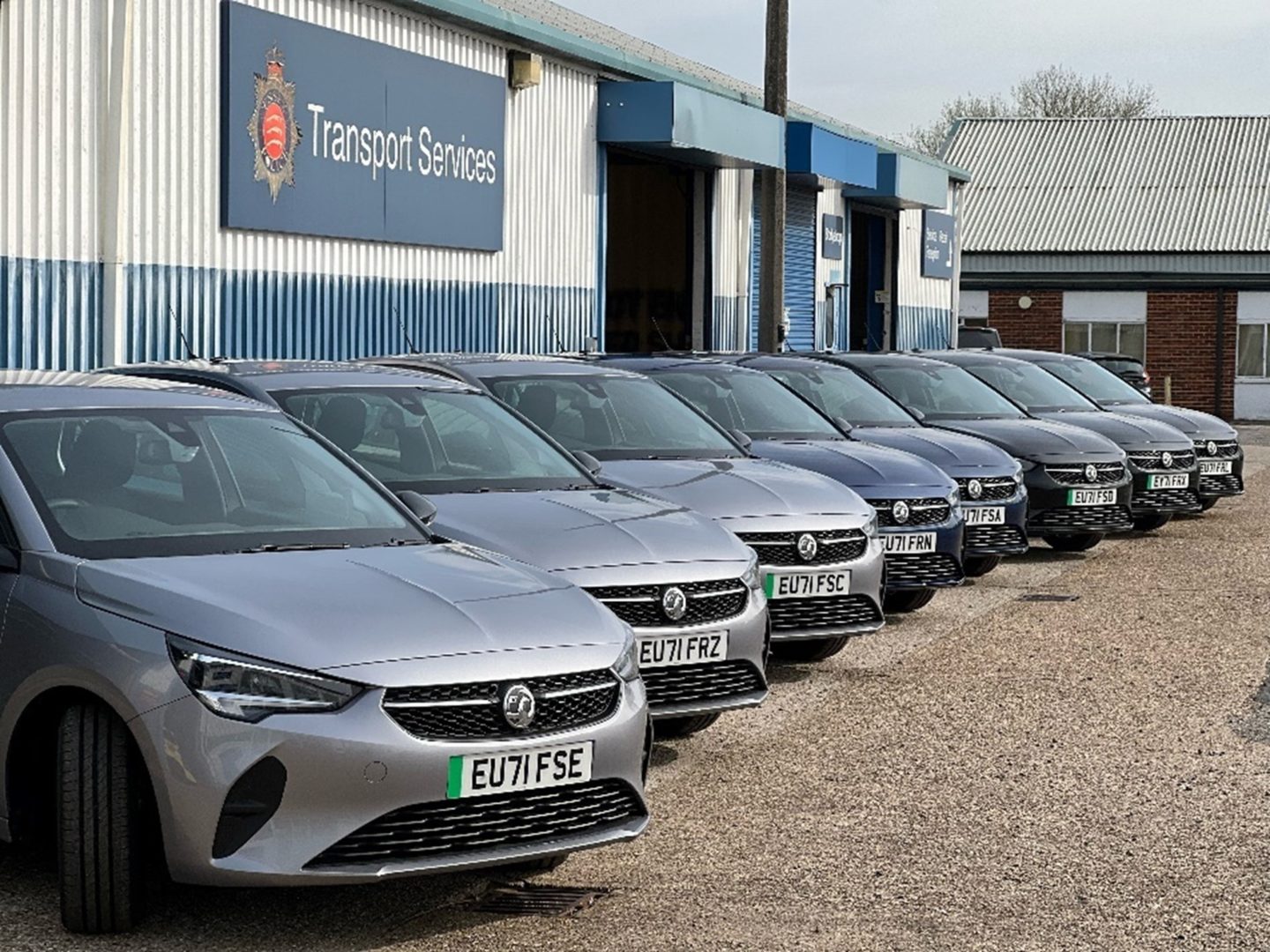
Essex Police, Fire and Rescue Fleet and Infrastructure Strategy
Case Study
The Challenge
In preparation for the UK Government’s plan for all new cars, vans, and heavy goods vehicles up to 26 tonnes to be zero emission vehicles by 2035, Essex Police and Essex County Fire & Rescue Service commissioned Cenex to develop a detailed Zero Emission Vehicle Fleet and Infrastructure Strategy.
Police, Fire & Rescue, and other emergency service fleets are particularly challenging to transition to zero emission vehicles for a variety of operational reasons.
- Emergency response vehicles are in use 24 hours a day, need to be available at short notice, and can be driven at sustained high speeds.
- Fire appliances use a power take-off from the diesel engine to pump water and undertake other firefighting activities.
- Regional coverage is provided by many sites with relatively few vehicles at each.
The Development
Cenex worked with Essex Police and Fire & Rescue to develop a Zero Emission Vehicle and Infrastructure Strategy for each fleet with clear recommendations and an implementable fleet transition plan. This was achieved through the following activities:
- Baselining the current fleet composition and emissions.
- Reviewing the availability and maturity of zero emission vehicle technologies.
- Assessing the real-world operating range suitability of battery electric and fuel cell electric vehicles.
- Determining the number and type of electric vehicle charging infrastructure required and the potential demand for renewable hydrogen by location.
- Summarising the capital costs, running costs, and emissions impacts of different fleet replacement scenarios.
- Undertaking a high level review of ultra-low emission vehicle technologies and renewable fuels as options to reduce greenhouse gas emissions during the transition to zero emission vehicle technologies.
- Developing a fleet transition roadmap and action plan.
The Result
The Zero Emission Vehicle and Infrastructure Strategy provides Essex Police and Fire & Rescue with a clear set of recommendations for achieving their ambition of transitioning to a zero emission vehicle fleet in realistic timescales.
Key Findings:
Police
- 81% of the police fleet could be replaced by battery electric vehicles that have sufficient range to complete their average daily mileages and already provide total cost of ownership savings, this would reduce greenhouse gas emissions by 53% based on the current UK electricity grid.
- Response vehicles account for 76% of the police fleet greenhouse gas emissions, so whilst battery electric vehicles can already be introduced in non-response roles it is important that Essex Police trial and demonstrate zero emission response vehicles to see what role they can fulfil on the fleet and what operational changes may be required to accommodate them.
Fire & Rescue
- 55% of the fire & rescue fleet could be replaced by battery electric vehicles that have sufficient range to complete their average daily mileages and already provide total cost of ownership savings, this would reduce greenhouse gas emissions by 16% based on the current UK electricity grid.
- Type B Fire Appliances, and other 18t rigid trucks, account for 64% of the fire & rescue fleet greenhouse gas emissions. Essex Fire & Rescue should develop a detailed understanding of their duty cycles and undertake market engagement with zero emission vehicle and infrastructure suppliers to develop options for trialling battery electric and fuel cell electric vehicles to see what role they can fulfil on the fleet and what operational changes may be required to accommodate them.
Infrastructure
- To minimise infrastructure costs, Essex Police and Fire & Rescue should work together to plan long term electric vehicle charging infrastructure on a site-by-site basis. An optimised solution can be developed by considering chargepoint sharing, load management, and by developing a better understanding of daily energy requirements and vehicle dwell times.
Chief Officers have adopted the comprehensive analysis and project report as the roadmap to meeting their zero emission aspirations. A Chief Officer Project Board incorporating the many provisioning departments will deliver the strategy for change, which potentially reflects changes to the operational delivery model.
Cenex Quote
Carl Christie, Fleet Strategy Lead at Cenex said ‘Essex Police, and other emergency service fleets, have just one or two fleet replacement cycles left until any new vehicles they procure will have a plug-in battery or hydrogen fuel cell system. It is crucial that emergency services not only plan for this transition but also take action now, we have been impressed with the pragmatic approach taken by Essex Police and Fire & Rescue and their willingness to look at every aspect of their operations to see if they can be optimised for zero emission vehicle technologies.
It is important that emergency service fleets have the knowledge and tools required to make informed decisions about zero emission vehicles and we will continue to develop our support to ensure that fleets can better understand their duty cycles and energy requirements, plan for and implement infrastructure strategies, trial and deploy zero emission vehicles as they become available, and engage with vehicle suppliers to ensure that future zero emission vehicles meet the unique requirements of emergency services fleets’.

